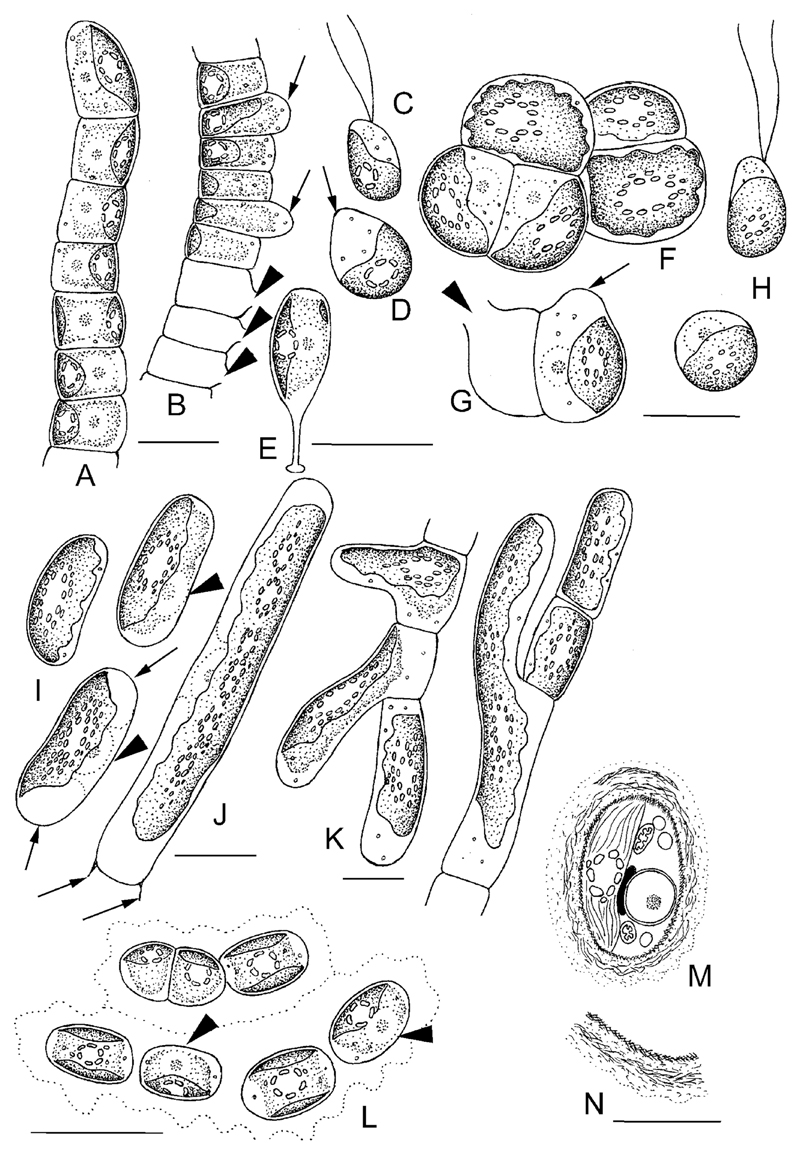Fig. 7.
Drawings of Hormidiella, Streptosarcina and Streptofilum species. A–E) Morphology and reproduction of Hormidiella parvula A) Vegetative filament. B) Sporangia (arrows) and empty sporangia with openings in cell wall (arrowheads). C) Zoospore. D) Stopped zoospore, formation of papilla (arrow). E) Germination of young filament with the stalk. F–H) Streptosarcina arenaria sp. nov. F) Packet-like vegetative thallus. G). Sporangium (arrow) and empty sporangium with opening in cell wall (arrowhead). H) Zoospore and stopped zoospore. I–K) S. costaricana sp. nov. I) Unicellular stage, nuclei (arrowheads) and terminal vacuoles (arrows) are visible. J) Elongated cell with multiple pyrenoids from old culture, H-like fragments of cell wall are visible (arrows). K) Branching of filaments. L–N) Morphology and ultrastructure of Streptofilum capillatum gen. et sp. nov. L) Filament and cell dyad surrounded by mucilage envelope, nuclei (arrowheads) are visible. M, N) Reconstruction of TEM micrographs with details of cell ultrastructure and coverage. Scale bars: A–L are 10 μm, M, N is 5 μm.

